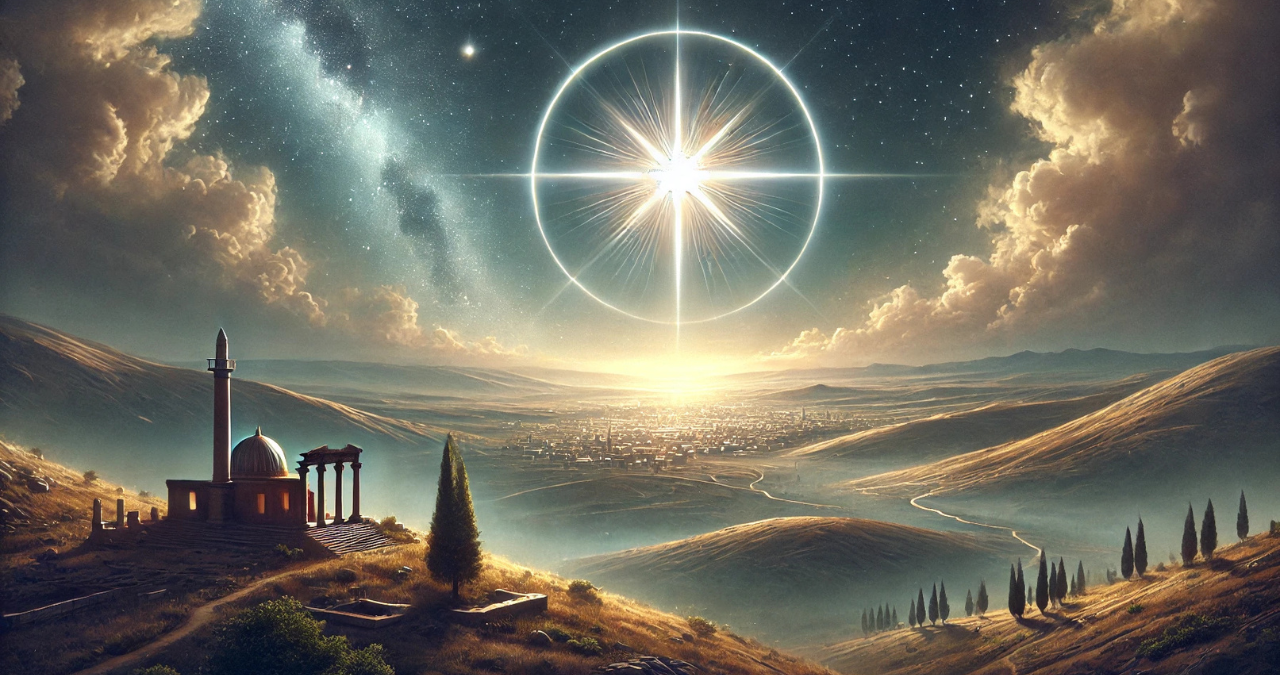The Star of Jacob, a term shrouded in mystique and laden with theological significance, emerges from the ancient scriptures of the Bible, capturing the imagination The Star of Jacob and devotion of scholars and believers alike. This article delves into the multifaceted interpretations and the profound impact of this celestial symbol across various cultures and The Star of Jacob, highlighting its enduring allure in religious thought and cultural expression.
Historical Context and Biblical References
The Prophecy of Balaam
In the biblical narrative found in Numbers 24:17, a curious figure named Balaam, a non-Israelite prophet, delivers a prophecy that has intrigued scholars for centuries: “I shall see him, but not now: I shall behold him, but not nigh: there shall come a Star out of Jacob, and a Sceptre shall rise out of Israel.” This prophecy, though cryptic, is rich in messianic expectations and has been pivotal in shaping the theological contours of Jewish and Christian eschatology. Balaam’s vision speaks of a future leader, symbolized by a star emerging from Jacob— a metaphor for the nation of Israel. This leader is envisioned as wielding a sceptre, suggesting royal or divine authority that would have significant repercussions for Israel and its surrounding countries.
Interpretations of “The Star of Jacob” in Ancient Texts
The interpretation of the Star of Jacob varies between Jewish and Christian texts, each adding layers of meaning that reflect their theological frameworks. In Jewish tradition, the star is often seen as a symbol of the coming of the Messiah—a leader who would rise from the lineage of David to restore Israel and bring peace. This messianic interpretation aligns with Jewish expectations of national redemption and spiritual renewal. Conversely, Christian theology adopts this prophecy to foretell the advent of Jesus Christ, associating the celestial star with the Star of Bethlehem that guided the Magi in the New Testament. This adaptation enriches the Christian narrative and bridges it with older Jewish prophecies, underscoring a continuity and fulfilment of fulfilment.
The Star of Jacob in Jewish Tradition
Messianic Symbolism
Within the tapestry of Jewish religious thought, the Star of Jacob holds a place of profound messianic significance. It symbolizes hope and divine intervention in men’s affairs. The star’s emergence is anticipated as a herald of a new era of peace and divine justice, where the struggles of the Jewish people find resolution through the leadership of a divinely appointed messiah. This symbolism is deeply embedded in Jewish liturgy and eschatological teachings, resonating through festivals and religious discourse, reinforcing a collective yearning for redemption and spiritual restoration.
Cultural Impact
The Star of Jacob transcends religious texts and profoundly influences Jewish culture. It features art, literature, and music, often symbolizing perseverance and divine promise. Its representation in Jewish art varies from explicit depictions in synagogue mosaics and manuscripts to more abstract incorporations in modern Jewish art. The star serves not only as a religious icon but also as a cultural motif that narrates the historical and spiritual journey of the Jewish people, encapsulating their trials, tribulations, and hopes.
The Star of Jacob in Christian Theology

Christological Interpretations
In Christian theology, the Star of Jacob is seamlessly woven into the fabric of Christological interpretations. It is considered prophetic of the coming of Jesus Christ, aligning with Old Testament prophecies foretelling a saviour who would arise from the house of David. This interpretation is pivotal in Christian eschatology, where the star symbolizes the fulfilment of God’s promises, the incarnation of the divine, and the guiding light leading the faithful to salvation. It is a theological link between the Old and New Testaments, highlighting a continuity of divine purpose and fulfilment in Christian doctrine.
Symbolism in Christian Art
The Star of Jacob also holds a significant place in Christian art, often depicted in scenes of the Nativity and Epiphany, where the Star of Bethlehem is central. This iconography illustrates biblical narratives and serves as a visual theology that underscores the messianic prophecies. Medieval and Renaissance art frequently features the star, symbolizing Christ’s divine origin and mission. The imagery of the star in Christian art not only decorates churches and religious texts but also serves as a didactic tool, conveying complex theological truths through visual means.
Conclusion
The Star of Jacob is a potent symbol that spans cultures and millennia, embedding itself deeply within the religious consciousness of both Jewish and Christian communities. Its interpretations offer rich insights into how celestial symbols can be woven into the fabric of spiritual life and cultural identity. As we continue to explore its layers of meaning, the Star of Jacob remains a beacon of faith, prophecy, and divine promise in the human quest for understanding and spirituality.
Frequently Asked Questions (FAQs)
- What is the Star of Jacob, and where is it mentioned in the Bible?
- The Star of Jacob refers to a prophecy made by Balaam in Numbers 24:17, symbolizing a future leader arising from Israel.
- How do different religions interpret the Star of Jacob?
- Jewish tradition sees it as a messianic symbol, while Christianity links it to Jesus Christ and the Star of Bethlehem.
- Is there any historical evidence supporting the existence of the Star of Jacob?
- The Star of Jacob is primarily a theological and symbolic figure with no direct historical evidence outside religious texts.
- How has the interpretation of the Star of Jacob evolved?
- Interpretations have adapted to cultural and theological changes within Judaism and Christianity, influencing art, literature, and religious practices.
- Can the Star of Jacob be linked to any astronomical events?
- While some theories connect it to astronomical phenomena, it is mostly seen as a symbolic figure within religious contexts.
You May Also Read: https://ventsbuzz.pro/yggdrasil-tattoo/



